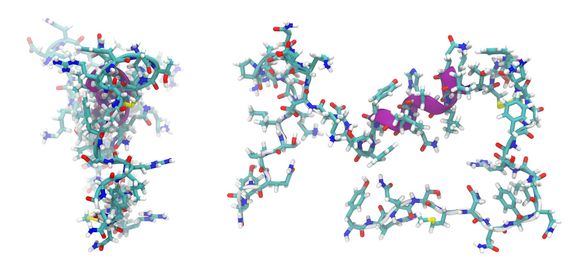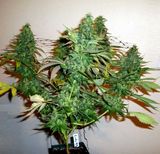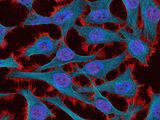Author: Rositsa Tashkova, Master of Molecular Biology and Microbiology
The record for the world's most venomous snake is once again held by an Australian species - the inland or western taipan (Oxyuranus microlepidotus) - its venom is specialized in killing mammals as they are the snake's prey. It is estimated that one bite is enough to kill at least 100 people.
Perhaps unsurprisingly, Australia is the homeland of the 10 most venomous snakes in the world.
But snake venom contains a huge variety of molecules, which have a pharmacological effect, and its toxicity is associated with only a small number of them.
Many of the toxins can be used for medical purposes due to their specific interaction with the body. And in this case the dose makes the poison. Of course, we are far from thinking that the bite of a venomous snake is a healthy practice.
As early as the beginning of the 17th century, the anticoagulant action of snake venom was known. And today, drugs based on it are produced. These are Captopril, Aggrastat and Eptifibatide.
In nature, there are many venomous organisms, besides snakes - scorpions, spiders, insects, amphibians and cone snails, the poisons of which can find application in biotechnology and pharmacy.
Snake Venom In Antiquity And Folk Medicine
The snake was considered a god of medicine in the ancient Greek world and it is still used these days as a symbol of medicine and pharmacy.
In Ayurveda, cobra venom is used to treat joint pain, inflammation and arthritis. It has also been used for centuries in China to treat opium addiction and by Indians, who combine it with opium for pain relief.
Other bodily fluids from snakes, such as blood and bile, are also widely used in traditional Chinese medicine. [ref.1]
What's In Snake Venom
According to some studies , more than 100 different substances are found in snake venom, with about 95% of the dry matter of the venom consisting of proteins and peptides.
Some are enzymes, and other components in snake venom are nucleosides, metal cations, carbohydrates and very low levels of free amino acids and lipids with less biological activity.
Most snake poisons contain proteolytic enzymes. These enzymes accelerate the breakdown of proteins in tissues to amino acids.

Another type of enzymes found in almost all snake poisons are hyaluronidases, which are considered "spreading factors" as they damage the tissue at the site of the bite. This facilitates the spread of other toxins.
Sodium is the most common cation in snake venom, but its role is unknown. Zinc and calcium are required for the activation of specific enzymes.
The composition of snake venom differs between species, subspecies or even in the same species of snakes. These differences are related to many factors, including geographical distribution, age, gender and what the snake feeds on.
Influence Of Snake Venom On The Body
Biologically active substances in snake venom have several main effects:
- Neurotoxicity (leads to neuromuscular paralysis),
- Myotoxicity (toxicity to muscle cells),
- Cytotoxicity (kills cells, can be used in the treatment of cancer),
- Hemotoxicity - toxicity to the blood: clotting or blockage of blood clotting, hemorrhages or hemolysis, that is, degradation of red blood cells;
- Antimicrobial activity - against Gram-positive and Gram-negative bacteria, viruses such as HIV virus, hepatitis C virus, yellow fever, dengue and measles, some microscopic fungi and parasites causing malaria, leishmaniasis and American tripanosome.

Medicines That Contain Snake Venom
There are at least 8 drugs containing snake venom components. Most of them are used in practice, while others are still at the clinical trial stage. Here are these drugs [ref.2]:
- Captopril - from the highly venomous jararaca or yarara (Bothrops jararaca), used against high blood pressure (hypertension);
- Aggrastat, Tirofiban - from the Indian saw-scaled viper (Echis carinatus), for heart attack;
- Integrilin, Eptifibatide - from the Barbour's pygmy rattlesnake (Sistrurus miliarius barbouri), in acute coronary syndrome;
- Defibrase/Reptilase, Batroxobin - from the common lancehead (Bothrops atrox and Bothrops moojeni), in stroke, pulmonary embolism, deep vein thrombosis and myocardial infarction;
- Hemocoagulase - from the common lancehead (Bothrops atrox), used in plastic and abdominal surgery, as well as in vitrectomy (a type of eye surgery);
- Exanta, Ximelagatran - from cobra, in thromboembolic complications and atrial fibrillation;
- Alfimeprase - at the stage of a clinical study, from the eastern copperhead (Agkistrodon contortrix), in acute peripheral arterial occlusion, also known as peripheral vascular disease;
- Viprinex, Ancrod - at the stage of a clinical study, by the Malayan pit viper (Agkistrodon rhodostoma, syn. calloselasma rhodostoma), in acute ischemic stroke.

Snake Venom As A Remedy For Cancer
The anti-cancer properties of snake venom were first studied in the 1930s, but without much success. In 1936, cobra venom was used on cancer patients for pain relief. About 30% of patients experienced significant pain relief, 38% reported a satisfactory analgesic effect, and only about 13% had no definite results. [ref.3]
Some substances in snake venom have two main qualities, due to which it could be used in the treatment of cancer:
- Inhibits angiogenesis, that is, the creation of new blood vessels, so necessary to feed the growing tumor and its spread to the surrounding tissues;
- It causes apoptosis - programmed cell death.
Substances that are isolated from the poison of various types of snakes and possess the ability to suppress angiogenesis are proteins and are called disintegratins.
Substances that cause apoptosis are also proteins, which include both disintegrines and L-amino acid oxidase (types of enzymes).
Currently, scientists are working on how to direct the action of these substances from snake venom only to cancer cells, without affecting others and how the substances reach the cells in question to destroy them.
The potential of snake venom is evidence of the richness of nature and folk medicine as a source of new discoveries applicable in modern medicine, including the treatment of some of the most insidious diseases - oncological.









